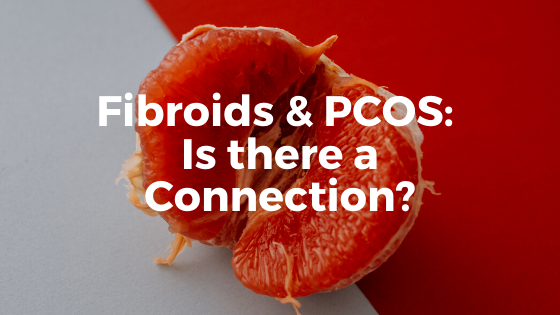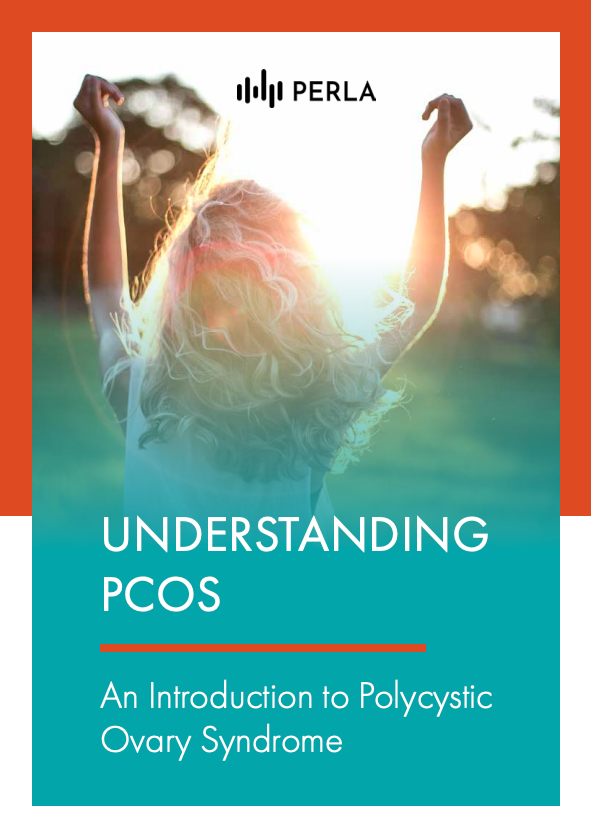Uterine fibroids, also known medically as leiomyomata or simply myoma, are the most common non-cancerous tumors that affect women in their reproductive years. Is there a link between fibroids and PCOS? Continue reading to learn more about these two very common reproductive disorders.
The Relationship between Fibroids and PCOS
Fibroids do not occur before puberty and are rarely observed after menopause. The fact that these tumors occur in women of reproductive age, specifically those between 30 and 40 years, led to the concept that their growth is dependent on reproductive hormones. 1
Similar to fibroids, PCOS occurs in women of reproductive age. It is caused by high levels of male hormones (androgens) and an imbalance in female hormones, including luteinizing hormone (LH) and follicle-stimulating hormone (FSH). Fibroids, by contrast, are being linked to an estrogen-progesterone imbalance and naturally occurring substances called growth hormones.2
Sometimes people confuse the two disorders as some of the symptoms of fibroids, including heavy bleeding and infertility or complicated pregnancy, are also common in PCOS.
What are Fibroids?
Fibroids are benign tumors that grow in the smooth muscle tissue of the uterus. They are the most common reason for hysterectomies (surgical removal of the uterus) in the United States and are the source of a wide range of symptoms including excessive uterine bleeding and chronic pain.3
Fibroids can develop:
- Within the uterine cavity
- On the surface of the uterus
- Within the muscular wall of the uterus
The size, shape, and location of these tumors can vary greatly. Fibroids can be as small as a pea or grow as big as a pumpkin, which can enlarge and distort the uterus.4
Hysterectomy is the only cure for fibroids. However, other medical treatments can be used to preserve fertility:5,6
- Hormonal contraceptives (pills, patch, vaginal rings, IUDs, shots, or implants)
- Gonadotropin-releasing hormone receptor blockers
- Selective progesterone receptor modulators (SPRMs)
Uterine fibroid embolization (UFE) is a non-invasive procedure that blocks the blood supply of fibroids, depriving them of nutrients. The tumors soften and eventually shrink in size, resulting in reduced pain and blood loss.7
PCOS and the Risk for Fibroids
What Research Says
Research suggests that fibroids are more common among African-American women with PCOS.8 In this population, Fibroids also develop at a younger age and grow more rapidly. The Black Women’s Health Study is an ongoing cohort study with 23,571 participants aged 21–69 years. It is the first to report a link between PCOS and uterine fibroids.
Over a 6-year period (1997-2003), 3,631 new cases of fibroids were reported following an ultrasound or hysterectomy. The incidence of uterine fibroids in women with PCOS was 65% higher than those without PCOS. The authors concluded that PCOS was associated with an increased risk of fibroids, at least among black women. One proposed theory points to the negative effect of androgens on the growth and release of eggs in the ovaries.
High levels of androgens cause failure to ovulate in women with PCOS, which leads to elevated levels of estrogen. Progesterone is released after ovulation and counterbalances the effects of estrogen. But, since there is no ovulation, estrogen continues to be released in the body unopposed by progesterone. Elevated levels of estrogen are linked to the development of fibroids.9
What Experts Say
Currently, the medical consensus is that there is no clear connection between PCOS and uterine fibroids. Although hormones play a role in their development and their symptoms overlap, they don’t necessarily appear to be related. They are separate conditions and are treated differently.
Although fibroids can cause pain and discomfort in some women, others will not have any symptoms at all. Their presence is discovered only after a routine pelvic examination. If you have trouble getting pregnant or have problems with miscarriage, you should seek evaluation for infertility. If you have PCOS and suddenly experience heavy bleeding, pelvic pain or pressure, and pain during intercourse, you should consult your gynecologist or your PCOS care team to undergo a full workup for your symptoms.
Sources
- American College of Obstetricians and Gynecologists. Uterine Fibroids. Acog.org. https://www.acog.org/patient-resources/faqs/gynecologic-problems/uterine-fibroids. Published 2020. Accessed August 25, 2020.
- Ciebiera M, Włodarczyk M, Wrzosek M, et al. Role of Transforming Growth Factor β in Uterine Fibroid Biology. International Journal of Molecular Sciences. 2017;18(11). doi:10.3390/ijms18112435
- American College of Obstetricians and Gynecologists. Hysterectomy. www.acog.org. https://www.acog.org/patient-resources/faqs/special-procedures/hysterectomy. Published October 2018. Accessed August 25, 2020.
- Pumpkin-Size “Giant” Fibroid Removed from Woman’s Uterus. livescience.com. https://www.livescience.com/63524-giant-fibroid-surgery.html. Published September 8, 2018. Accessed August 25, 2020.
- Stewart E, Laughlin-Tommaso S. UpToDate. www.uptodate.com. https://www.uptodate.com/contents/uterine-fibroids-beyond-the-basics/. Published July 18, 2020. Accessed August 25, 2020.
- Farris M, Bastianelli C, Rosato E, Brosens I, Benagiano G. <p>Uterine fibroids: an update on current and emerging medical treatment options</p>. Therapeutics and Clinical Risk Management. 2019;Volume 15:157-178. doi:10.2147/tcrm.s147318
- Fibroid Embolization – Uterine Fibroid Embolization. www.uclahealth.org. https://www.uclahealth.org/obgyn/uterine-artery-embolization. Accessed August 25, 2020.
- Wise LA, Palmer JR, Stewart EA, Rosenberg L. Polycystic ovary syndrome and risk of uterine leiomyomata. Fertility and sterility. 2007;87(5):1108–1115. doi:10.1016/j.fertnstert.2006.11.012
- Reis FM, Bloise E, Ortiga-Carvalho TM. Hormones and pathogenesis of uterine fibroids. Best Practice & Research Clinical Obstetrics


